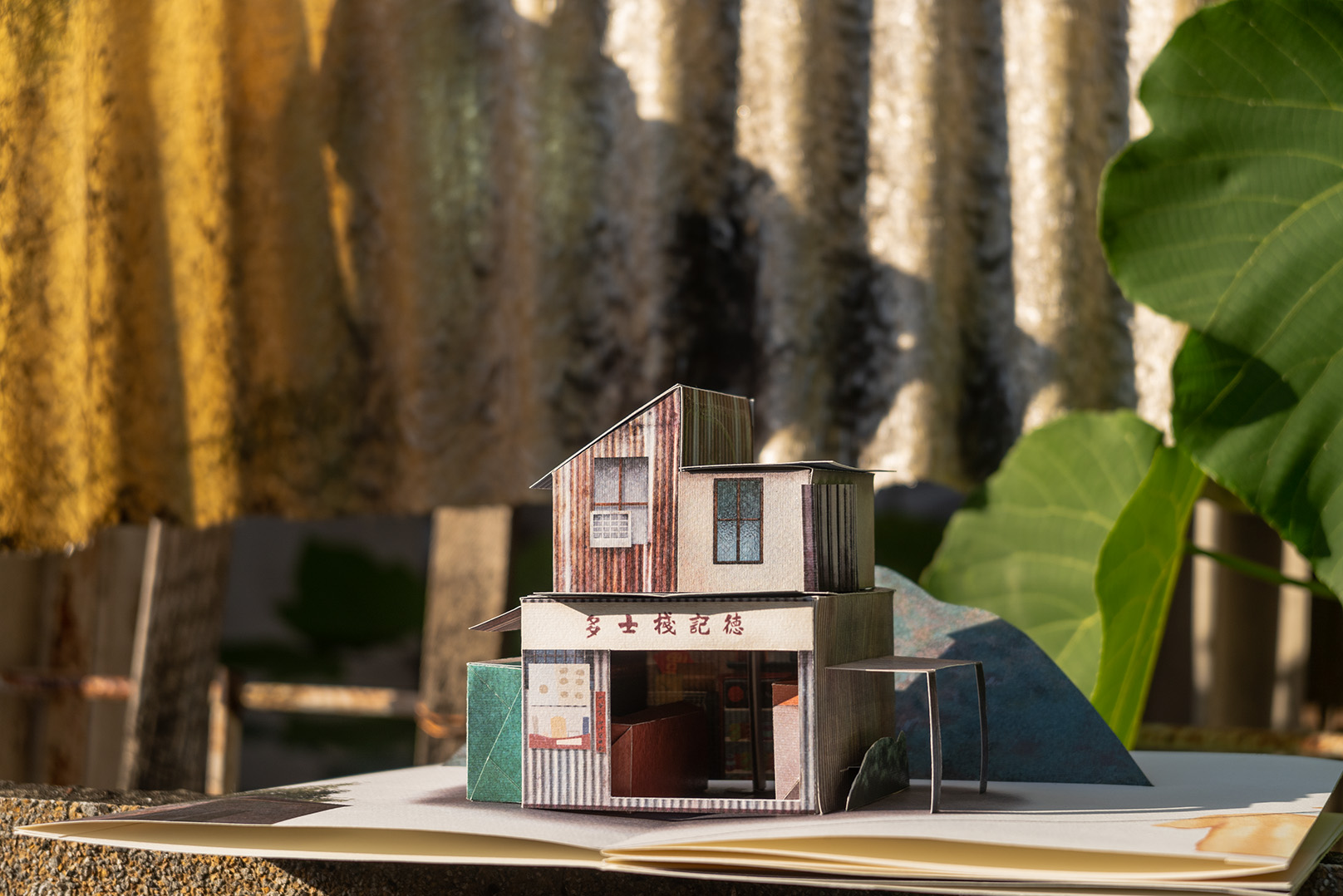
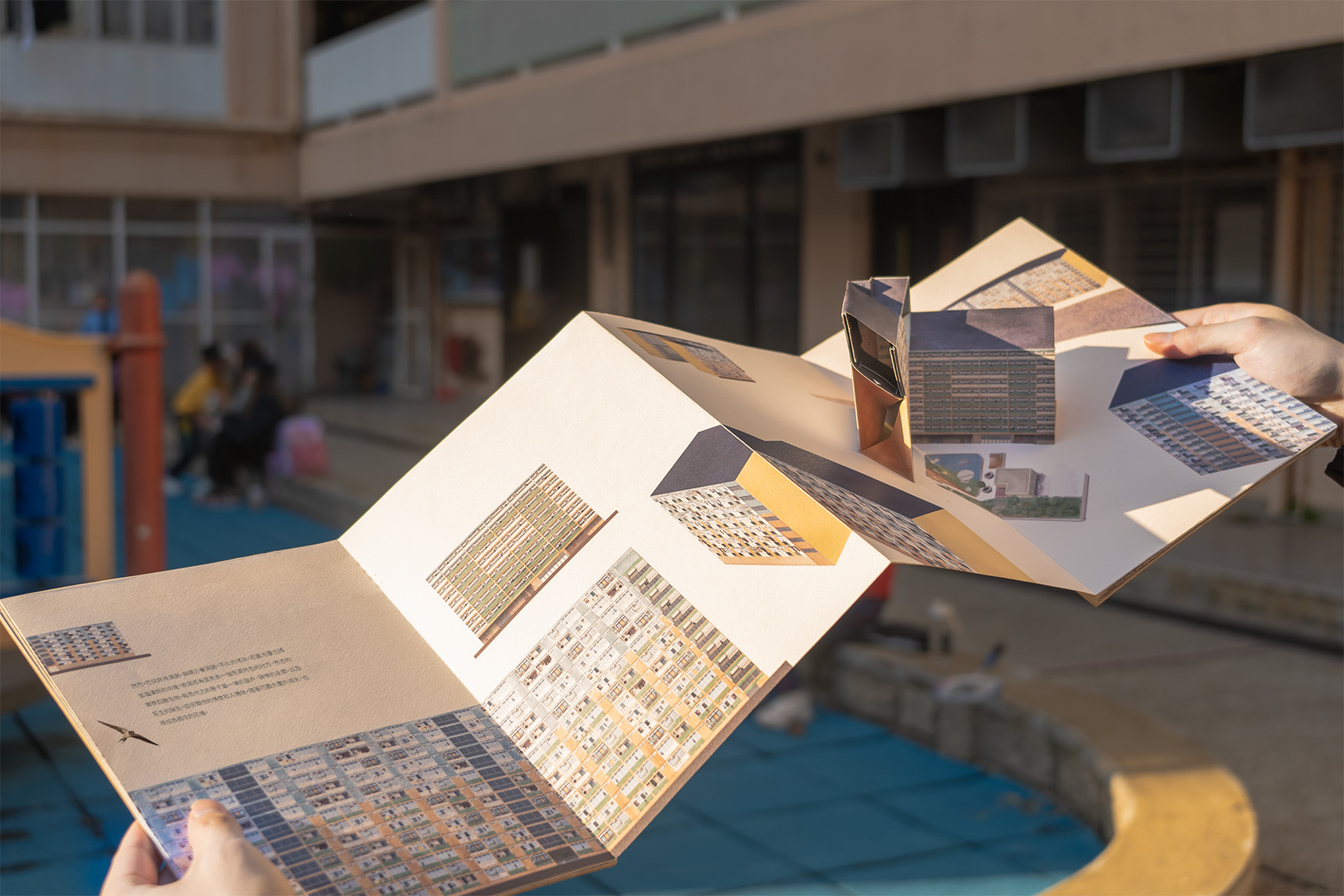
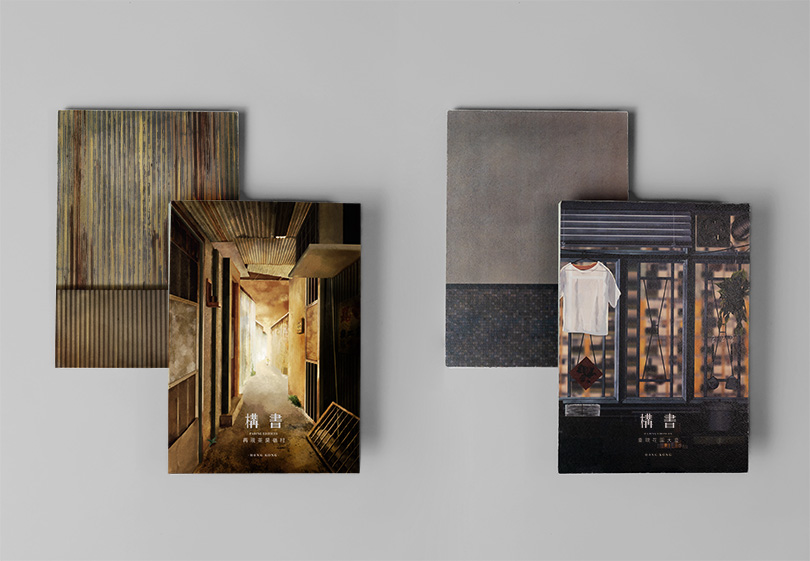
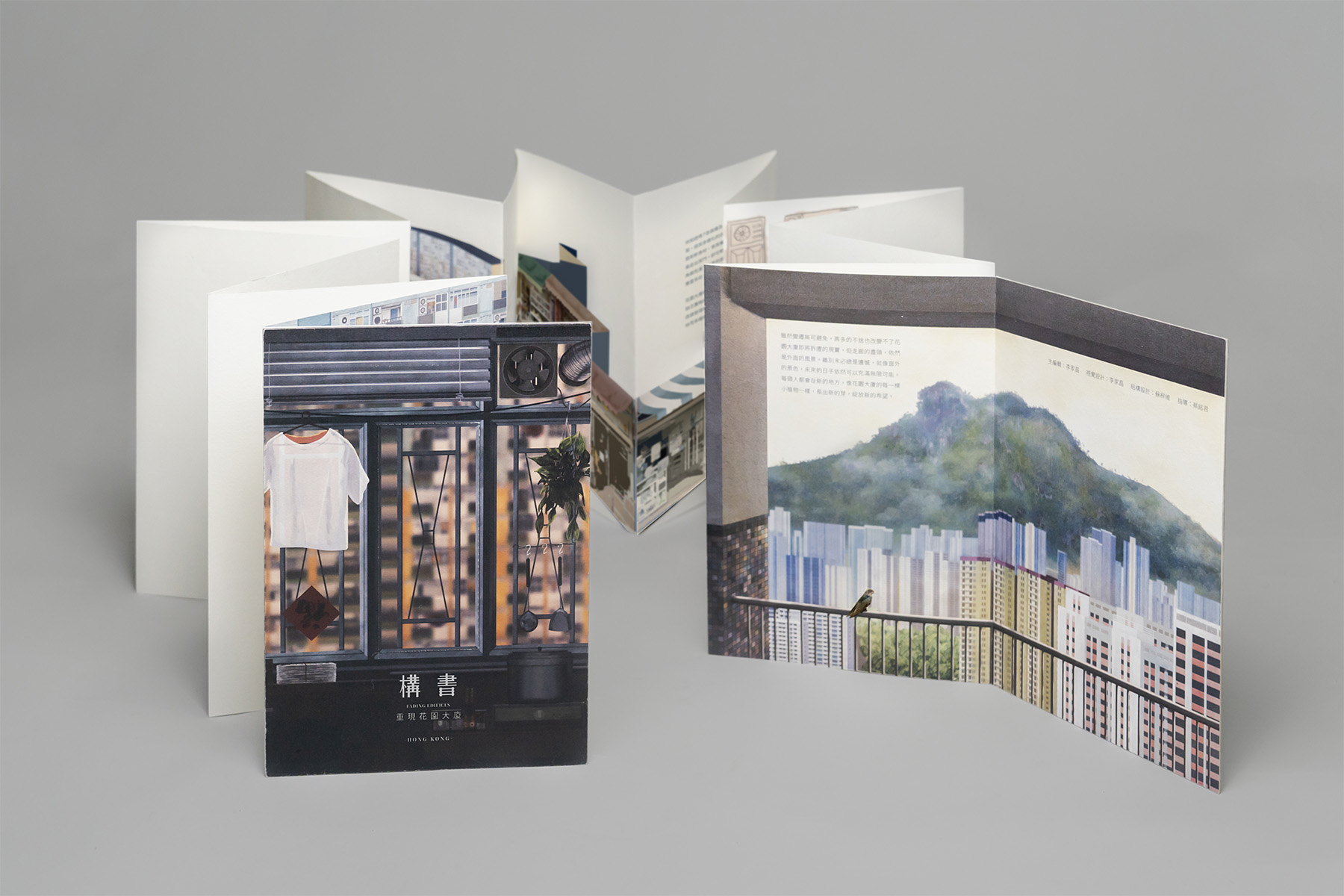
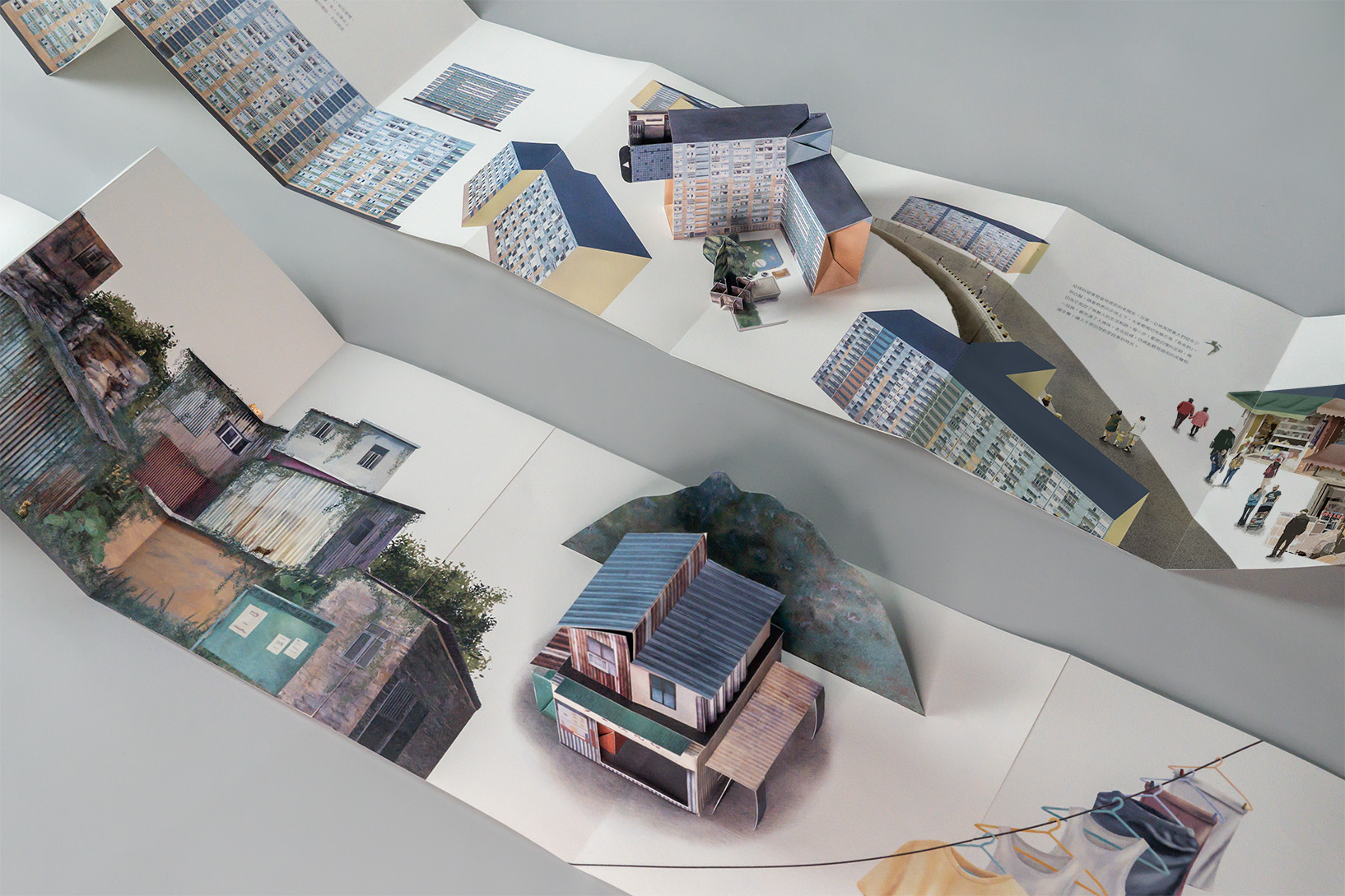
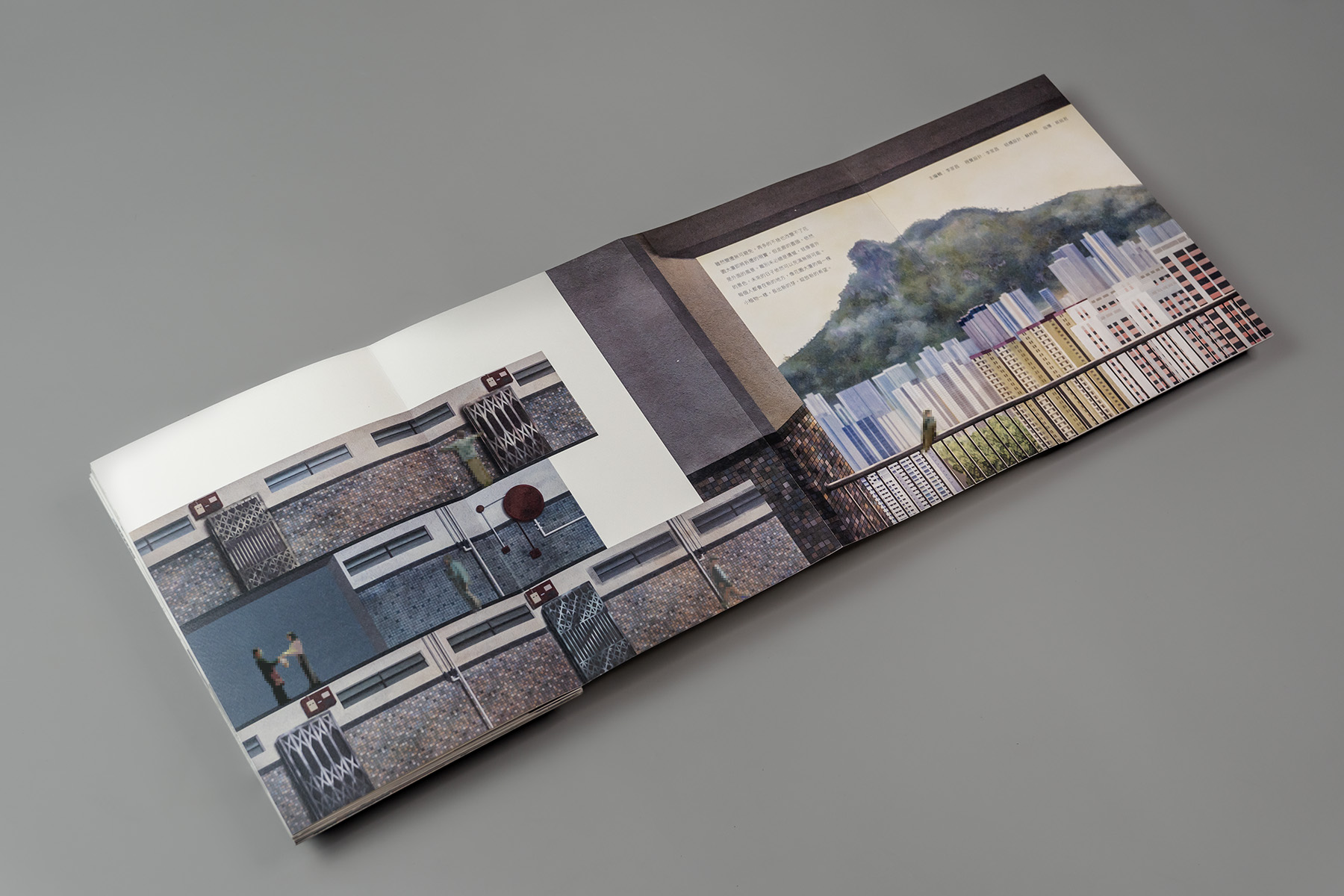
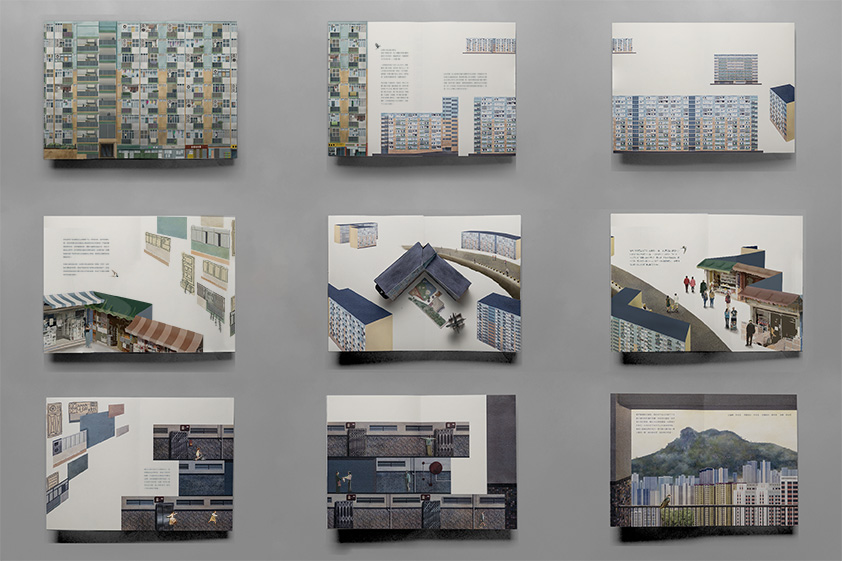
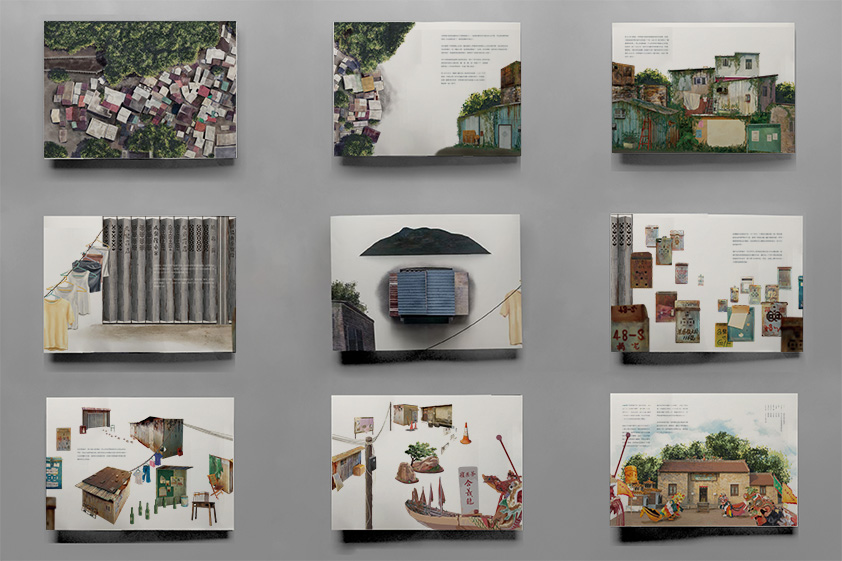
香港面積僅約1100平方公里,但居住超過700萬人,成為世界上人口密度極高的都會。隨著城市迅速發展與人口激增,土地資源日漸稀缺,政府不得不進行城市重建,拆除不少老舊建築,改建現代高樓。這些即將消逝的舊建築不僅是居民的家園,更承載了香港獨特的人文情懷和歷史記憶,每一處都見證了不同年代的社會文化與生活方式,其消失無疑削弱了城市的歷史深度。
為此,《構書》應運而生。該書通過結合藝術與建築歷史,採用視覺化的手法保存和再現那些將被遺忘的建築。全書分為兩冊,一冊聚焦擁有四百年歷史的茶果嶺村,另一冊則記錄了1960年代的花園大廈。書中運用了獨特的「經書折」裝幀技術,搭配精緻插圖與立體書結構,生動呈現建築的外觀與細節,讓讀者能夠直觀感受這些建築背後的文化底蘊和歷史故事。
《構書》不僅是對舊建築的紀錄,更是對歷史保存與城市文化的一種致敬。它讓現代人在城市快速變遷中,重新審視與思考歷史空間的價值,也為熱愛建築、歷史與藝術的讀者展開一場引人入勝的視覺和知識探索之旅。
Hong Kong is one of the world’s most densely populated metropolises with 7 million people in 1,100 square kilometres. As the city rapidly develops and its population surges, land resources grow increasingly scarce, compelling the government to pursue urban renewal — demolishing aging structures and replacing them with modern high-rises. These vanishing buildings are not merely residences; they embody Hong Kong’s unique cultural ethos and historical memory. Each site bears witness to the social cultures and ways of life across different eras, and their disappearance risks eroding the city’s historical depth.
《Fading Edifices》 combines art and architectural history to visually preserve and reimagine these forgotten structures. With two volumes, one focuses on the 400-year-old Cha Kwo Ling Village, while the other documents the 1960s Garden Estate. Employing the distinctive "sutra-binding" folding technique, paired with intricate illustrations and pop-up structures, the book vividly reconstructs the architecture’s form and details, allowing readers to intimately engage with the cultural legacy and historical narratives embedded within these spaces.
《Fading Edifices》 is more than a record of vanishing buildings—it is a tribute to historical preservation and urban culture. It invites readers to reflect on the value of historical spaces amid relentless urban transformation, while offering architecture, history, and art enthusiasts an immersive journey of visual and intellectual discovery.